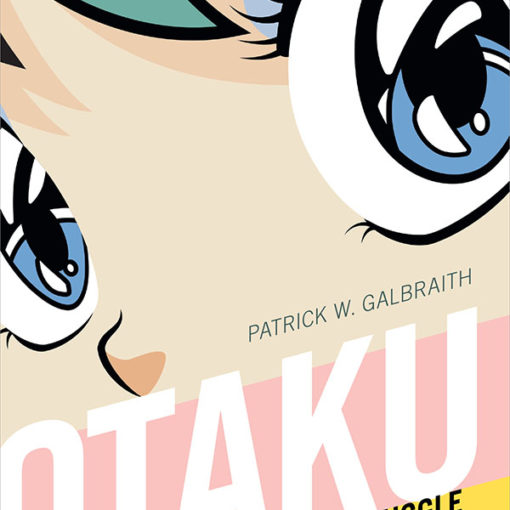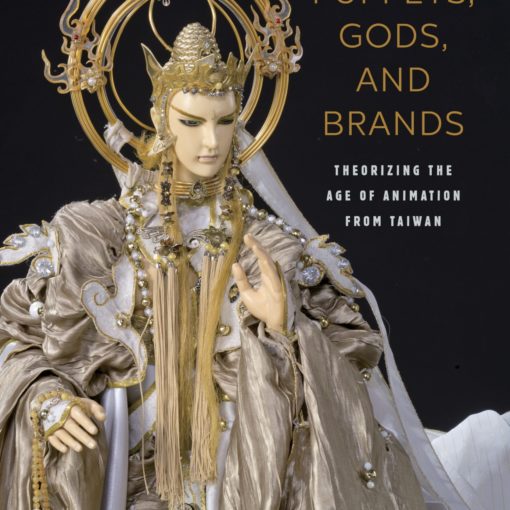Jennifer S. Prough. Straight from the Heart: Gender, Intimacy, and the Cultural Production of Shōjo Manga. Honolulu: University of Hawai’i Press, 2011.
Deborah Shamoon
There was a time when all scholarly writing on manga and anime had to begin with a disclaimer explaining their importance and significance for uninformed Western readers. Thankfully, that time seems to have finally passed, at least for those genres that have reached a wide audience outside Japan. Study of shōjo manga, however, has lagged behind the study of anime and of other genres of manga. Although shōjo manga specifically and girls’ culture generally are significant aspects of modern Japan, they have been underrepresented in academic writing. Thank goodness, then, for Jennifer Prough’s Straight from the Heart, which is the first book-length study of the shōjo manga industry written in English. Prough, an anthropologist, focuses her analysis not on literary or visual interpretation, but on the industry itself: how shōjo manga magazines are produced and marketed, and the relationship between artists, editors, and readers. Like Sharon Kinsella, whose 2000 book Adult Manga she cites, Prough conducted field work at the major manga publishing houses (Kōdansha, Shōgakukan, Shūeisha, and Hakusensha). Unlike Kinsella, however, whose analysis was informed by Marxism, Prough focuses her analysis on gender.
Shōjo manga has always been a tricky topic for feminist analysis, because the promise of a girls-only space is so often undercut by narratives that seem to reinforce sexist ideology. Prough wisely sidesteps much of this debate by focusing on the production of manga. Gender dynamics play a role here as well, as nearly all the artists are young women and most of the editors are middle-aged men. Prough examines how shōjo manga are marketed to appeal to girls’ sensibilities, how publishers elicit and gauge reader participation, and readers are cultivated into becoming professional artists. Her conclusions, based on extensive interviews and engagement with Japanese-language manga studies discourse, are measured, eschewing a strongly polemical or ideologically driven argument. Instead, she shows how shōjo manga, like any other popular culture text, balance competing demands of the marketplace, girls’ tastes, and cultural expectations for girls’ behavior.
One strength of this study is that Prough primarily analyzes the most popular and mainstream aspects of shōjo manga in the 1990s and 2000s. By contrast, most previously published research on shōjo manga in English has tended to focus on those aspects that are most unusual to Western readers, namely, boys’ love, ladies’ comics, and dōjinshi (amateur manga). While there is still much to be said about those subgenres and about the amateur manga market, in-depth study of the most mainstream aspects of shōjo manga has been previously lacking in English. This study provides crucial understanding of the most salient and important aspects of the industry.
Another strength of this study is that Prough reads shōjo manga as popular culture texts, that is, as commodities subject to the demands of industry. Because casual readers usually encounter individual manga titles in reprinted format, it is tempting to interpret them as the work of a single artistic vision, or auteur, to borrow a term from film studies. In reality, however, the majority of shōjo manga are more similar to television dramas or big-budget films in that they are the product of multiple sources of input and heavily dependent on sales figures: a commercial enterprise, not art for art’s sake. For this reason, Prough examines the monthly and weekly magazines where the titles are first serialized, rather than the later reprint volumes. In turning her attention to the magazines as a whole, including the contests, prizes, letters pages, and fan art, Prough provides a more complete view of how shōjo manga are produced and consumed.
Prough argues that just as the primary theme of shōjo manga is the representation of emotion, the industry itself also operates on a discourse of emotion and close human relationships. Although they may generate less revenue than reprints, magazines are key for encouraging a sense of community among readers and cultivating upcoming artists. Magazines use prizes and character goods to encourage readers to respond to surveys indicating which stories they enjoy and why. These surveys, along with fan mail, are a primary way the magazines stay connected to girl readers and respond quickly to what they want to read. All of these channels of communication between the readers and the producers foster a sense of closeness, which was one of the driving forces behind the “golden age” in the 1970s, and remains important today. This is not only because readers feel the artists are girls just like themselves, but also, as Prough explains, because publishers find nearly all their new talent from among readers, not from art school graduates or amateur artists in the dōjinshi market (84). As readers are the primary source of new artists, the relationship between readers, artists, and editors is much more complex and interactive than one might find in other commercial media. This unusual relationship is one of the defining traits of shōjo manga.
Prough also examines the relationship between the editors and artists in terms of gender roles. As the majority of artists today are young and inexperienced, the editors’ role is quite strong. However, Prough also sees a change in the editorship at the major publishing houses. Historically, most shōjo manga editors were older men placed in that division involuntarily, without prior interest in manga of any kind. There is a growing number of women editors, many of whom grew up reading shōjo manga, although they tend to be relegated to the “mommy track” (105). Nevertheless, in interviews they report a greater emotional investment in the genre, and even younger male editors are more likely to have grown up as manga fans. This close relationship, in which the producers are also consumers, Prough argues, “leads us to question the dichotomy between production and consumption as they have been theorized…today many producers in the culture industry are also consumers” (109).
Prough looks at this complex relationship between producers and consumers through the lens of Gals! by Fujii Mihona (Ribon 1999-2003). In this story of trendy kogals who police the streets of Shibuya to prevent classmates from engaging in enjo kōsai (underage prostitution), Prough sees a balance between attention-grabbing topical stories and the kinds of socially responsible messages editors feel obliged to deliver. Prough makes an unusual choice in skipping over classics of the genre or titles better known in English translation to focus on a story and author that will probably be obscure to most readers. However, it is precisely by analyzing a story that was popular but not extraordinary that we can see the average state of the genre at work. In Prough’s analysis, Gals! encourages girls to forgo the short-term financial reward of enjo kōsai in favor of the more intangible benefits of female friendship and self-respect, while at the same time still glorifying the materialist fashions that tempt girls to sell themselves for cash in the first place. This kind of narrative, which contains competing strains of feminist and sexist ideologies, is typical of shōjo manga, what Prough describes as “the tension between ‘what girls want,’ ‘what girls should want,’ and ‘what will sell,’ all of which are as productive as they are descriptive” (128). She also includes analysis of a non-fiction book surveying girls’ attitudes about sexuality, presented in manga format by manga magazine Dessert. This is a good example of how the industry as a whole contributes to a discourse on girlhood, in conjunction with the fictional narratives that are usually the exclusive focus of manga scholarship.
Prough ends her study with an overview of how shōjo manga has recently been expanding outside the traditionally closed world of girls’ culture to reach new audiences, primarily through traveling museum exhibitions and foreign licensing. Prough found at the time of her field work that publishers were largely indifferent to foreign markets outside Asia, although that has changed in the past five years.
This book provides an excellent overview of a topic that is central to contemporary Japan but that has so far been underrepresented in academic writing. The writing is clear and meticulously documented, and should appeal to both scholars of Japan and those without a background in Japanese studies. It is recommended for anyone interested in contemporary Japan, gender studies, and popular culture. Because of its approachable style, it is also recommended for adoption in undergraduate courses. Like all good scholarship, the book suggests many questions for future research. Especially rich is the question of shōjo manga’s direction from here, given the preponderance of young, inexperienced artists, the increased possibilities for community building on the internet, and the emergence of new audiences overseas. At the same time, this study of contemporary shōjo manga also points to the need for further study of classic titles and the historic development of the genre. Hopefully this book will usher in more research in English on manga that is similarly measured and well informed.


